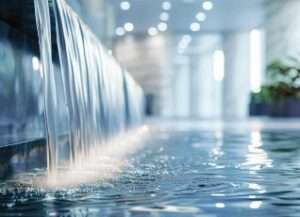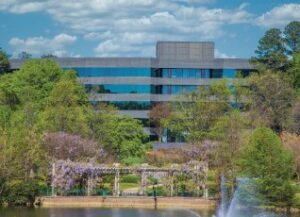Water from municipal water systems is often contaminated with small amounts of bacteria, parasites, fungi, and other organisms that escape disinfection methods. The low amounts of these organisms generally do not cause disease but can pose a threat in complex or multi-story plumbing systems due to various factors. Here are the most common.
Water temperature fluctuations
Legionella survives in a wide range of water temperatures but grows rapidly at temperatures of 77°F-113°F. To keep water outside this ideal range, it’s essential to keep hot water hot and cold water cold. Factors that can lead to ideal Legionella temperatures include:
- Setting the water heater too low
- Long pipes that lose heat as the water moves along
- Hot and cold water pipes being too close together
- Places in a water system where hot and cold water mix
- Stagnant water, which tends to lose heat
- Cold water pipes that are not protected from hot weather
Biofilm
Biofilm is a slimy buildup in pipes made up of bacteria, fungi, sediments, and nutrient deposits. It can grow continuously on any surface exposed to moisture and is an ideal environment for organisms to grow, offering protection from disinfectant.
Water stagnation
Areas of plumbing systems with poor or no water flow can create areas of standing water. Biofilm grows, and water reaches ambient temperatures, creating an ideal environment for organisms to grow.
Sediment
Sediment is a collection of minerals and natural materials introduced into building water systems from the municipal water supply. It damages pipes and other water-using equipment, shields bacteria from supplemental disinfection, provides nutrients to organisms in the water and uses up disinfection unnecessarily.
Scale
When minerals from the water collect inside a water system, it forms a hard, rock-like buildup known as scale. Scale forms a barrier that interferes with heating and cooling the water, which can lead to unpredictable and/or unacceptable water temperatures. It also provides an ideal environment for Legionella and other waterborne pathogens to grow.
Changes in water pressure
If water pressure inside your building is affected for any reason, it may dislodge biofilm, releasing bacteria into the rest of the water system.
Low levels of disinfectant
Normal building processes like heating, storing, and filtering can reduce the amount of disinfectant in the water, allowing bacteria to grow.
Construction
Vibrations can dislodge biofilm and scale — and the bacteria living in it — into a building’s water supply.
Water main breaks
A water main break can cause a sudden change in water pressure, which can dislodge biofilm. In addition, a water main break often results in extra dirt or unwanted matter in the water. When these contaminants show up, they use the disinfectant supply and further compromise building water.
Municipal water supply
Changes in the municipal water supply can increase sediment and affect disinfectant levels, potentially leading to bacteria growth.


